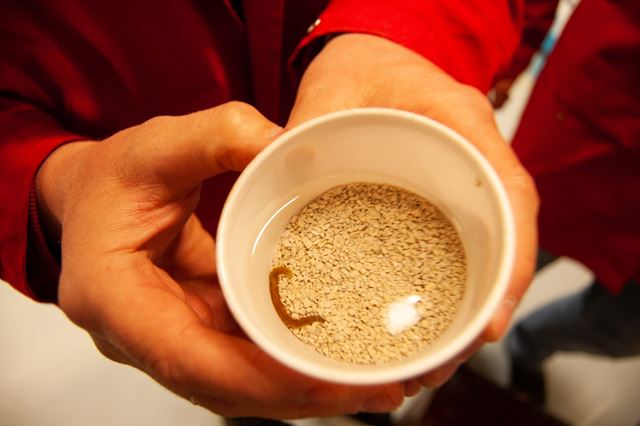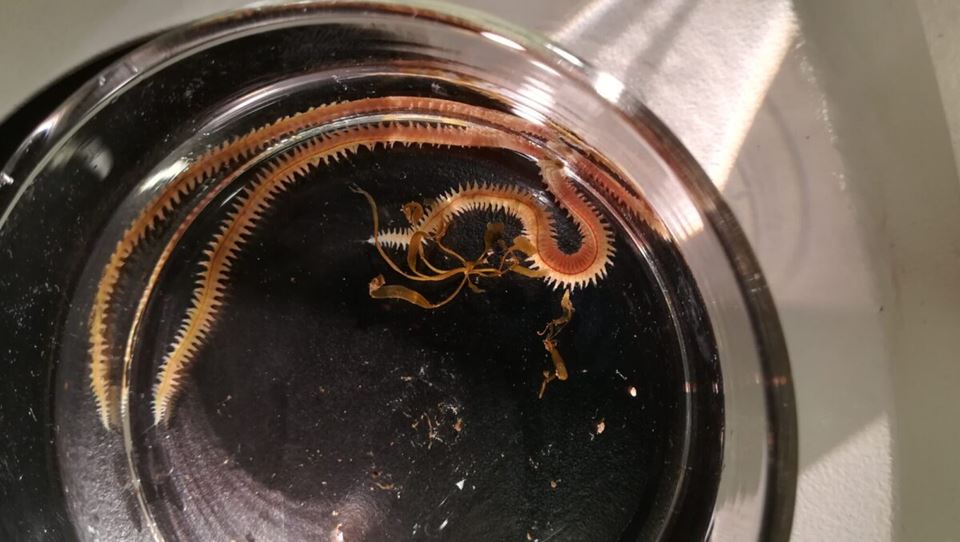Researchers have previously demonstrated that bristle worms can flourish and grow on the sludge derived from farmed fish. Now there is a debate going on about whether these same bristle worms can be fed to farmed salmon.
But how safe is it really to allow salmon to feed on bristle worms that have been feeding on excrement sludge derived from the salmon themselves? A research team has been looking into this as part of a project called SecureFeed.
“We’re analysing data that can tell us how safe this is in relation to contamination by bacteria and viruses, as well as prion diseases resulting from cannibalism”, says SINTEF researcher Andreas Hagemann. “We’re also looking into the accumulation of heavy metals, environmental toxins and drug residues”, he says.

This is what a bristle worm looks like. But is it safe to feed it to farmed salmon, raised for human consumption, after it has been feeding on excrement sludge derived from the salmon themselves? Photo: Håvard Egge
Challenging the regulations
Hagemann describes his team’s research as a milestone on the road towards a more sustainable, circular value chain operating in the aquaculture sector.
It is currently prohibited to provide animals with feed derived from the same animals’ own value chain.
“EU legislation is not based on science, but on a precautionary principle established following cases involving prion diseases, in particular so-called ‘mad cow’ disease, that were recorded way back in the 1980s”, says Hagemann. “Our aim is to identify what risks really exist, and to challenge the existing regulations”, he says.
Major impact
Any changes to the regulations will have a major impact. Researchers have calculated that bristle worms produced from Norwegian salmon farm sludge may constitute between eight and nine per cent of the feed required for the industry to achieve its target of one million tonnes of additional salmon production in 2030.
“In 2019, Norwegian salmon farms produced 500,000 tonnes of excrement sludge”, says Hagemann. In theory, this represents enough raw material to raise about 150,000 tonnes of bristle worms”, he says.
“The bristle worm will also be a very nutrient-rich feed for farmed salmon”, he adds, “because it contains long-chain, polyunsaturated omega-3 fatty acids.
The SecureFeed project is a joint project involving SINTEF Ocean, the Norwegian Veterinary Institute and the Institute of Marine Research. It is being funded by the Norwegian Fisheries and Aquaculture Research Fund (FHF).


